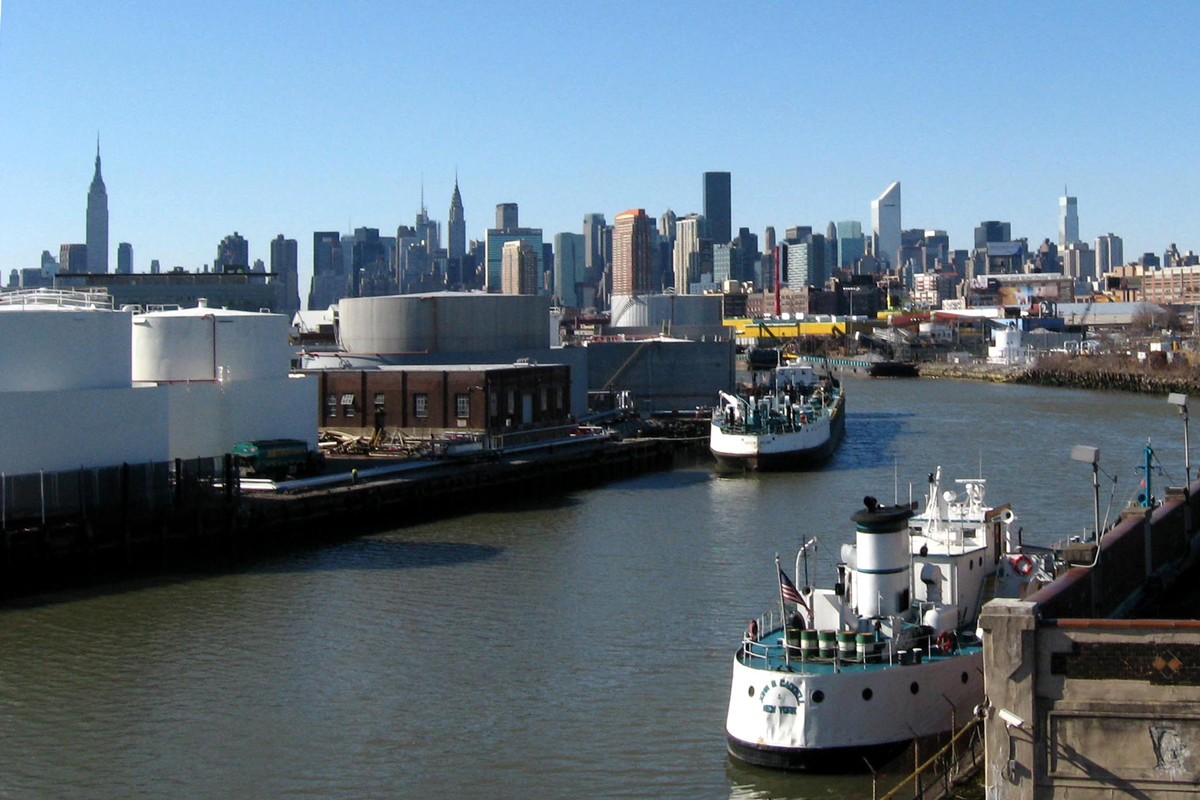
To respond to the climate crisis, New York City must preserve M-zones and invest in manufacturing and industrial innovation.
By Eric Ottaway, Charles Boyce and Tom Outerbridge
–
NYC Industrial companies hold the keys to our sustainable future – are we willing to keep the space for them?
As Superstorm Sandy demonstrated, climate change is one of the greatest existential challenges facing New York and cities like it. Since then, cities around the country have made commitments to reduce their emissions and strengthen their resiliency. But lawsuits and regulation, important as they are, can only go so far toward reducing our carbon footprint and improving our long-term quality of life.
Creating, producing, and integrating green and resiliency technologies, and reducing the carbon-intensity of critical services like transportation and electricity generation are the brass-tacks of how places like New York will be able to mitigate and adapt to climate change. All these activities require the active participation of a robust industrial sector, the fundamental part of our economy that employs over 500,000 New Yorkers who make, move, maintain, and mend things.
If the city wants a sustainable future, what’s greener than ensuring that industrial businesses can produce, distribute, and repair goods as close as possible to the end user? And process and recycle the waste streams produced locally?
As these industrial companies transform themselves with fourth industrial revolution technologies—digitization, data, and automation—they will inherently become more efficient and nimble, with new ways to minimize their ecological footprints and impacts to local communities. They will also provide continued pathways to the middle class, as workers can start at any education level and develop multi-disciplinary skill-sets on the job, going beyond working with their hands to utilize advanced technologies like robotics, artificial intelligence, and predictive analytics. Employers, meanwhile, will need to support internal innovation, employee creativity, and improve workplace practices in order to have success on the 21st century shop floor. Ultimately, these companies will be in a better position to create customized solutions to local problems, with climate change resiliency and mitigation being key among them.
To unleash the full potential of the industrial sector in our climate change goals, we have a much more fundamental issue to address: the threat to areas that industrial companies call home in NYC. These areas, called Manufacturing Districts or M-zones, were explicitly created to provide space for industrial companies—to prioritize these important activities, and to contain any noise or other externalities in a fixed area.
But today, M-zones face major challenges. The infrastructure inside them is in need of repair, from untended potholes to inefficient broadband connectivity. City regulations are often confusing to navigate as our zoning-use codes haven’t been updated since the 1960s – even though our businesses have changed dramatically. Most consequentially, the supply of real estate has been reduced. There is increased pressure on this already limited space as other sectors have been permitted to locate within these M-zones, exacerbating both use conflicts and real estate speculation, raising property prices in the process.
Until the industrial sectors feel increased certainty about their future in NYC, we may lose important economic activities that not only provide jobs for the middle class, but hold a critical role in the supply chain for key city functions: producing and distributing our food, getting us deliveries from near and far, and providing infrastructure services like electrical repairs, waste management and recycling, and bridge and water supply maintenance—to say nothing of the innovations needed to respond to climate change.
But the very biggest challenge is space. If industrial companies cannot stay here—if M-zones continue to come under threat—then NYC will likely lose its strongest partner in its sustainable future. As the debate about whether industrial space should be de-prioritized for other uses in M-Zones, we must instead leverage manufacturing zones for the vital resources they provide to respond to the climate crisis: manufacturing and industrial businesses.
–